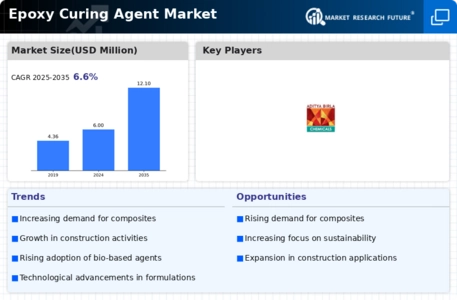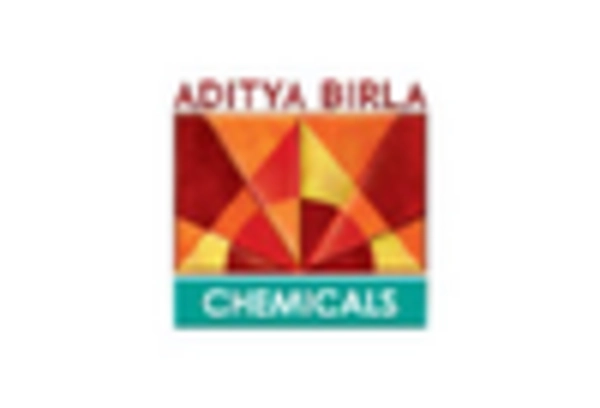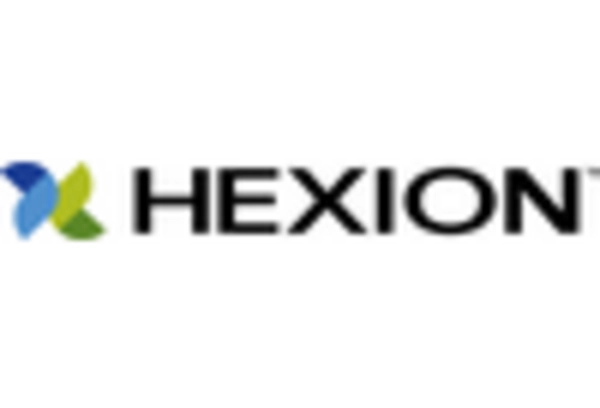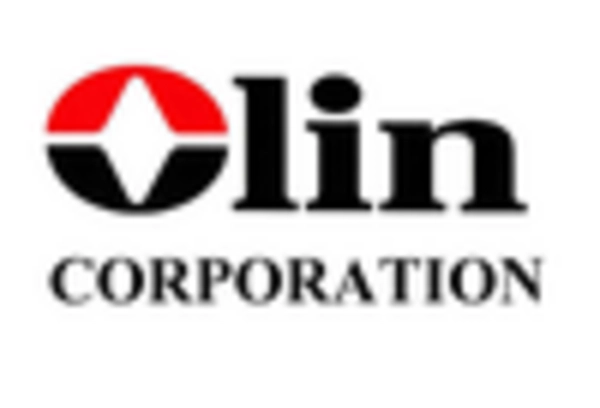-
Executive Summary
-
Market Introduction
-
Market Definition
-
Scope of the
-
Study
-
List
-
of Assumptions
-
Markets Structure
-
Market Research Methodology
-
Research Process
-
Primary Research
-
Secondary Research
-
Market Size Estimation
-
Forecast
-
Model
-
Market Dynamics
-
of the Global Epoxy Curing Agent Market
-
Introduction
-
Drivers
-
Restraints
-
Opportunities
-
Challenges
-
Trends/Technology
-
Market Factor
-
Analysis of the Global Epoxy Curing Agent Market
-
Supply Chain Analysis
-
Porter’s Five Forces Analysis
-
Threat of New Entrants
-
Power of Buyers
-
of Suppliers
-
Pricing Analysis
-
Raw Material Suppliers
-
Manufacturers/Producers
-
Distributors/Retailers/Wholesalers/E-Commerce
-
Applications
-
Bargaining
-
Bargaining Power
-
Threat of Substitutes
-
Intensity of Competitive Rivalry
-
Global
-
Epoxy Curing Agent Market, by Product Type
-
Introduction
-
Amines
- Market Estimates
-
Market Estimates & Forecast, 2020-2027
-
& Forecast, by Region, 2020-2027
-
Polyamide
- Market Estimates & Forecast,
- Market Estimates & Forecast, by Region, 2020-2027
-
Imidazoles
- Market Estimates & Forecast, 2020-2027
- Market
-
Estimates & Forecast, by Region, 2020-2027
-
Polymercaptan
- Market
- Market Estimates & Forecast,
-
Estimates & Forecast, 2020-2027
-
by Region, 2020-2027
-
Anhydrides
- Market Estimates &
-
Market Estimates & Forecast, 2020-2027
-
Forecast, by Region, 2020-2027
-
Polymercaptan
- Market Estimates
-
Market Estimates & Forecast, 2020-2027
-
& Forecast, by Region, 2020-2027
-
Others
- Market Estimates & Forecast, 2020-2027
- Market
-
Estimates & Forecast, by Region, 2020-2027
-
Global
-
Epoxy Curing Agent Market, by Application
-
Introduction
-
Adhesive
- Market Estimates & Forecast,
- Market Estimates & Forecast, by Region, 2020-2027
-
Coatings
- Market Estimates & Forecast,
- Market Estimates & Forecast, by Region, 2020-2027
-
Composites
- Market Estimates & Forecast,
- Market Estimates & Forecast, by Region, 2020-2027
-
Electronics
- Market Estimates & Forecast,
- Market Estimates & Forecast, by Region, 2020-2027
-
Others
- Market Estimates & Forecast,
- Market Estimates & Forecast, by Region, 2020-2027
-
Global Epoxy Curing Agent Market, by Region
-
Introduction
-
North America
- Market Estimates
- Market Estimates
- US
- Canada
-
Market Estimates & Forecast, 2020-2027
-
& Forecast, by Product Type, 2020-2027
-
& Forecast, by Application, 2020-2027
-
Estimates & Forecast, by Product Type, 2020-2027
-
by Product Type, 2020-2027
-
Market Estimates & Forecast, by Application, 2020-2027
-
Europe
-
& Forecast, by Product Type, 2020-2027
-
by Product Type, 2020-2027
-
Italy
-
Market Estimates & Forecast, 2020-2027
-
Type, 2020-2027
-
Market Estimates & Forecast,
-
Market Estimates & Forecast, by Product Type,
-
Market Estimates & Forecast, by Application,
-
Germany
-
Market Estimates & Forecast, 2020-2027
-
Market Estimates
-
Market Estimates & Forecast, by Application, 2020-2027
-
France
-
Market Estimates & Forecast, 2020-2027
-
Market Estimates & Forecast,
-
Market Estimates & Forecast, by Application, 2020-2027
-
Market Estimates & Forecast, by Product
-
Market Estimates & Forecast, by Application, 2020-2027
-
Spain
-
Market Estimates & Forecast, 2020-2027
-
& Forecast, by Application, 2020-2027
-
& Forecast, 2020-2027
-
Forecast, by Application, 2020-2027
-
Forecast, 2020-2027
-
Market Estimates & Forecast, by Product Type,2020-2027
-
Market Estimates
-
UK
-
Market Estimates
-
Market Estimates & Forecast, by Product Type,2020-2027
-
Market Estimates &
-
Russia
-
Market Estimates &
-
Market Estimates & Forecast, by Product Type,2020-2027
-
by Application, 2020-2027
-
Estimates & Forecast, by Product Type, 2020-2027
-
Market Estimates & Forecast,
-
Poland
-
Market Estimates & Forecast,
-
Market
-
Market Estimates & Forecast, by Application,
-
Rest of Europe
-
Market Estimates & Forecast,
-
Market Estimates & Forecast, by Product Type, 2020-2027
-
by Application, 2020-2027
-
Market Estimates & Forecast, 2020-2027
-
Estimates & Forecast, by Product Type, 2020-2027
-
Estimates & Forecast, by Application, 2020-2027
-
& Forecast, 2020-2027
-
& Forecast, by Application, 2020-2027
-
& Forecast, 2020-2027
-
& Forecast, by Application, 2020-2027
-
& Forecast, 2020-2027
-
& Forecast, by Application, 2020-2027
-
& New Zealand
-
Market Estimates & Forecast, 2020-2027
-
Type, 2020-2027
-
Market Estimates & Forecast,
-
Asia-Pacific
- Market
- Market
- China
- India
- Japan
- Australia
-
Market Estimates & Forecast, by Application, 2020-2027
-
Rest of Asia-Pacific
-
& Forecast, by Product Type, 2020-2027
-
East & Africa
-
by Product Type, 2020-2027
-
Market Estimates & Forecast, 2020-2027
-
Market Estimates
-
Market Estimates & Forecast, by Application,
-
Middle
- Market Estimates & Forecast,
- Market Estimates & Forecast, by Product Type,
- Market Estimates & Forecast, by Application,
- GCC
-
Market Estimates & Forecast, by Application, 2020-2027
-
Israel
-
Market Estimates & Forecast, 2020-2027
-
& Forecast, by Application, 2020-2027
-
Africa
-
Market Estimates & Forecast, 2020-2027
-
& Forecast, by Application, 2020-2027
-
& Forecast, 2020-2027
-
Forecast, by Application, 2020-2027
-
& Africa
-
Market Estimates & Forecast, 2020-2027
-
Type, 2020-2027
-
Market Estimates & Forecast, by Product Type, 2020-2027
-
Market Estimates
-
North
-
Market Estimates & Forecast, by Product Type, 2020-2027
-
Market Estimates
-
Turkey
-
Market Estimates
-
Market Estimates & Forecast, by Product Type, 2020-2027
-
Market Estimates &
-
Rest of Middle East
-
Market Estimates & Forecast, by Product
-
Market Estimates & Forecast, by Application, 2020-2027
-
Latin America
-
& Forecast, by Product Type, 2020-2027
-
Forecast, by Product Type, 2020-2027
-
by Product Type, 2020-2027
-
& Forecast, by Product Type, 2020-2027
-
Market Estimates & Forecast,
-
Market Estimates & Forecast, by Product Type,
-
Market Estimates & Forecast, by Application,
-
Brazil
-
Market Estimates & Forecast, 2020-2027
-
Market Estimates
-
Market Estimates & Forecast, by Application, 2020-2027
-
Argentina
-
Market Estimates & Forecast, 2020-2027
-
Market Estimates &
-
Market Estimates & Forecast, by Application, 2020-2027
-
Mexico
-
Market Estimates & Forecast, 2020-2027
-
Market Estimates & Forecast,
-
Market Estimates & Forecast, by Application, 2020-2027
-
Rest of Latin America
-
Market Estimates & Forecast, 2020-2027
-
Market Estimates
-
Market Estimates & Forecast, by Application, 2020-2027
-
Company Landscape
-
Introduction
-
Market Key Strategies
-
Key Development Analysis (Expansion/Merger &
-
Acquisitions/Joint Venture/New Product Development/Agreement/Investment)
-
Company Profiles
-
Evonik Industries AG
-
Company Overview
-
Key Developments
-
Company Overview
-
Key Developments
-
Financial Updates
-
Product/Business Segment Overview
-
Strategies
-
SWOT Analysis
-
Financial Updates
-
Segment Overview
-
SWOT Analysis
-
Company Overview
-
Key Developments
-
Company Overview
-
Key Developments
-
Company Overview
-
Key Developments
-
Company Overview
-
Key Developments
-
Company Overview
-
Key Developments
-
Company Overview
-
Updates
-
Overview
-
Key Developments
-
Financial Updates
-
Product/Business Segment Overview
-
Key Strategies
-
SWOT Analysis
-
BASF SE
- Financial Updates
- Product/Business Segment Overview
- Key Strategies
- SWOT Analysis
-
Huntsman International LLC
- Company Overview
- Key
- Key Developments
-
Cardolite Corporation
- Company Overview
- Product/Business
- Key Strategies
- Key Developments
-
Kukdo Chemical Co., Ltd.
- Financial Updates
- Product/Business Segment Overview
- Key Strategies
- SWOT Analysis
-
Aditya Birla Chemicals
- Financial Updates
- Product/Business Segment Overview
- Key Strategies
- SWOT Analysis
-
Mitsubishi Chemical Corporation
- Financial Updates
- Product/Business Segment Overview
- Key Strategies
- SWOT Analysis
-
Momentive Specialty Chemicals Inc.
- Financial Updates
- Product/Business Segment Overview
- Key Strategies
- SWOT Analysis
-
The Dow Chemical Company
- Financial Updates
- Product/Business Segment Overview
- Key Strategies
- SWOT Analysis
-
Air Products and Chemicals, Inc.
- Financial
- Product/Business Segment
- Key Strategies
- SWOT Analysis
-
Others
-
Conclusion
-
LIST OF TABLES
-
Global
-
Epoxy Curing Agent Market, by Region, 2020-2027
-
North
-
America: Epoxy Curing Agent Market, by Country, 2020-2027
-
Table 3
-
Europe: Epoxy Curing Agent Market, by Country, 2020-2027
-
Table 4
-
Asia-Pacific: Epoxy Curing Agent Market, by Country, 2020-2027
-
Table
-
Middle East & Africa: Epoxy Curing Agent Market, by Country,
-
Latin America: Epoxy Curing Agent Market,
-
by Country, 2020-2027
-
Global Epoxy Curing Agent Product
-
Type Market, by Regions, 2020-2027
-
North America:
-
Epoxy Curing Agent Product Type Market, by Country, 2020-2027
-
Table 9
-
Europe: Epoxy Curing Agent Product Type Market, by Country, 2020-2027
-
Table10
-
Asia-Pacific: Epoxy Curing Agent Product Type Market, by Country, 2020-2027
-
Table11 Middle East & Africa: Epoxy Curing Agent Product
-
Type Market, by Country, 2020-2027
-
Table12 Latin America:
-
Epoxy Curing Agent Product Type Market, by Country, 2020-2027
-
Table 13
-
Global Epoxy Curing Agent Application Market, by Regions, 2020-2027
-
Table14
-
North America: Epoxy Curing Agent Application Market, by Country, 2020-2027
-
Table15 Europe: Epoxy Curing Agent Application Market, by Country,
-
Table16 Asia-Pacific: Epoxy Curing Agent Application
-
Market, by Country, 2020-2027
-
Table17 Middle East & Africa:
-
Epoxy Curing Agent Application Market, by Country, 2020-2027
-
Table18
-
Latin America: Epoxy Curing Agent by Application Market, by Country, 2020-2027
-
Table19 Global Product Type Market, by Region, 2020-2027
-
Table20 Global Application Market, by Region, 2020-2027
-
Table21
-
North America: Epoxy Curing Agent Market, by Country, 2020-2027
-
Table22
-
North America: Epoxy Curing Agent Market, by Product Type, 2020-2027
-
Table23
-
North America: Epoxy Curing Agent Market, by Application, 2020-2027
-
Table24 Europe: Epoxy Curing Agent Market, by Country, 2020-2027
-
Table25 Europe: Epoxy Curing Agent Market, by Product Type,
-
Table26 Europe: Epoxy Curing Agent Market,
-
by Application, 2020-2027
-
Table27 Asia-Pacific: Epoxy
-
Curing Agent Market, by Country, 2020-2027
-
Table28 Asia-Pacific:
-
Epoxy Curing Agent Market, by Product Type, 2020-2027
-
Table29 Asia-Pacific:
-
Epoxy Curing Agent Market, by Application, 2020-2027
-
Table30
-
Middle East & Africa: Epoxy Curing Agent Market, by Country, 2020-2027
-
Table31 Middle East & Africa: Epoxy Curing Agent Market,
-
by Product Type, 2020-2027
-
Table32 Middle East &
-
Africa: Epoxy Curing Agent Market, by Application, 2020-2027
-
Table33
-
Latin America: Epoxy Curing Agent Market, by Country, 2020-2027
-
Table34 Latin America: Epoxy Curing Agent Market, by Product
-
Type, 2020-2027
-
Table35 Latin America: Epoxy Curing Agent
-
Market, by Application, 2020-2027
-
LIST OF FIGURES
-
Global Epoxy Curing Agent Market Segmentation
-
FIGURE
-
Forecast Research Methodology
-
Five Forces
-
Analysis of the Global Epoxy Curing Agent Market
-
Value
-
Chain of the Global Epoxy Curing Agent Market
-
Share
-
of the Global Epoxy Curing Agent Market in 2017, by Country
-
FIGURE 6
-
Global Epoxy Curing Agent Market, 2020-2027,
-
Global
-
Epoxy Curing Agent Market Size, by Product Type, 2020
-
Share
-
of the Global Epoxy Curing Agent Market, by Product Type, 2020-2027
-
FIGURE
-
Global Epoxy Curing Agent Market Size, by Application, 2020
-
FIGURE10
-
Share of the Global Epoxy Curing Agent Market, by Application, 2020-2027

















Leave a Comment